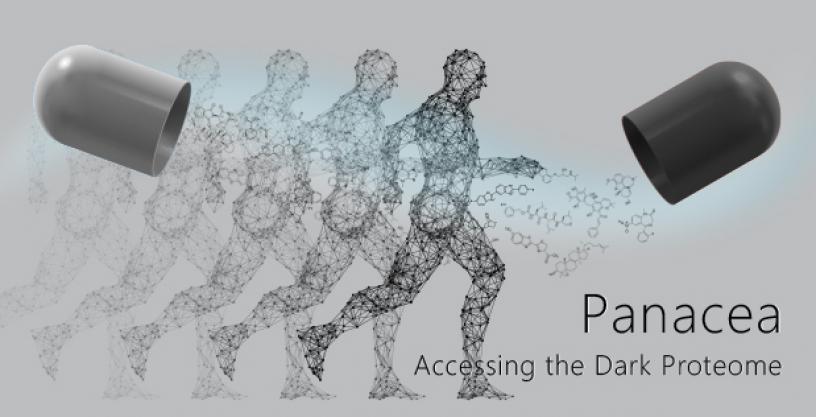
Panacea aims to generate multi-target pharmacological interventions that provide superior physiological effectiveness to help military service members complete their toughest missions
Nov 28, 2018
Flying at 50,000 feet, diving deep in the ocean, or hiking for miles with gear through extreme climates, military service members face conditions that place unique burdens on their individual physiology. The potential exists to develop pharmacological interventions to help service members complete their toughest missions more safely and efficiently, and then recover more quickly and without adverse effects, but those interventions must work on complex physiological systems in the human body. They will not be realized under the prevailing system of drug discovery and development with its focus on engaging single molecular targets. DARPA created the Panacea program to pursue the means of rapidly discovering, designing, and validating new, multi-target drugs that work with the body’s complexity to better support the physiological resilience and recovery of military service members.
The premise of Panacea is that the physiological systems of the human body work in complex and highly integrated ways. Drugs exert effects on our bodies by physically interacting with and changing the functional state of biomolecules that govern the functions of cells and tissues. Most drugs target proteins, which are the principle cellular workhorses. Ideally, drugs would target multiple proteins simultaneously to exert precise, network-level effects.
One major problem facing the drug development community is that the functional proteome — the complete collection of proteins and their roles in signaling networks — is largely dark to science. Despite being able to identify many of the proteins within a cell, researchers do not have a firm grasp on everything those proteins do and how they interact to affect physiology.
Due to this sparsity of structural and functional knowledge, the state of the art in drug development — what Panacea seeks to transform — is to engage only a very small fraction of known protein targets to achieve an effect. In fact, today’s approach to drug design singles out individual proteins in certain cells. That hyper-specificity is an attempt to minimize the risk of side effects and speed time to market, but it also yields a thin stream of drugs, many of which have similar mechanisms and relatively muted effectiveness compared to what might be achieved using a multi-target, systems-based approach.
“The current roster of drugs approved by the U.S. Food and Drug Administration only targets about 549 proteins, yet the body can produce more than six million different protein variants,” said Tristan McClure-Begley, the Panacea program manager. “The opportunity space for pharmacological intervention is vast and effectively untapped, but to access it we need new technology for understanding and targeting the human functional proteome.”
Panacea will address the lack of functional knowledge about the proteome. DARPA’s call to the research community is to consider complex physiological conditions relevant to military service members — for instance, metabolic stress during extreme endurance missions or pain and inflammation after injury; investigate the molecular mechanisms underlying those conditions; identify multiple, key molecular targets involved; and develop novel medicinal chemistry approaches to synthesize interventions that modulate those targets. DARPA believes that multi-target drugs will deliver safer and more efficacious solutions to military requirements for readiness and recovery over state-of-the-art interventions.
“Many of the most successful drugs produced in the past were found rather than made, and we knew what they did long before we knew how they did it,” McClure-Begley said. “To deliver improved interventions, we need to get to a place where we can investigate all of the potential proteins at play for a given condition and then prioritize sets of protein targets and signaling networks to effectively modulate physiological systems, regardless of what prior knowledge exists about those targets.”
The Panacea program aims to generate initial proof of concept for this new direction in drug discovery and development. Research will primarily involve animal models, human cell derived organoids, and high-throughput cell culture models. However, to support eventual transition to humans, DARPA will work with federal agencies to develop a regulatory pathway for future medical use. By the end of the five-year program, DARPA will require teams to submit novel drug candidates to the U.S. Food and Drug Administration for review as an Investigational New Drug or for Compassionate Use.
DARPA will hold a Proposers Day on December 14, 2018, in Arlington, Virginia, to provide more information about Panacea and answer questions from potential proposers. For details of the event, including registration requirements, visit https://go.usa.gov/xP6hD.
The Broad Agency Announcement detailing program structure and objectives is available at https://go.usa.gov/xPhXT.
Image Caption: The prevailing system of drug discovery and development focuses on engaging single molecular targets. To more effectively engage with the complex, integrated physiological systems of the human body, DARPA's Panacea program will transform drug development, yielding new drugs that target multiple proteins simultaneously to exert precise, network-level effects.
###
Media with inquiries should contact DARPA Public Affairs at outreach@darpa.mil.
Associated images posted on www.darpa.mil and video posted at www.youtube.com/darpatv may be reused according to the terms of the DARPA User Agreement, available at https://www.darpa.mil/policy/usage-policy.
Tweet @darpa
